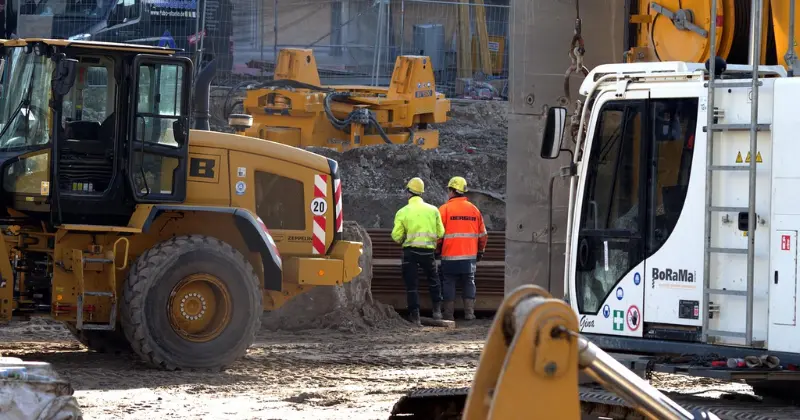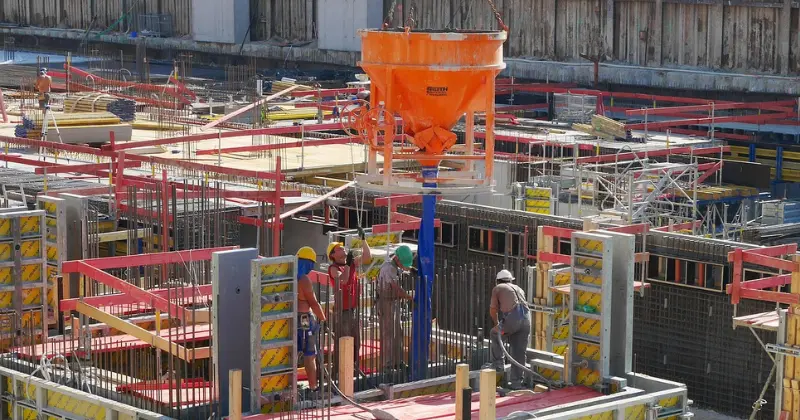10 mins read
The Importance of Efficient Construction Document Management
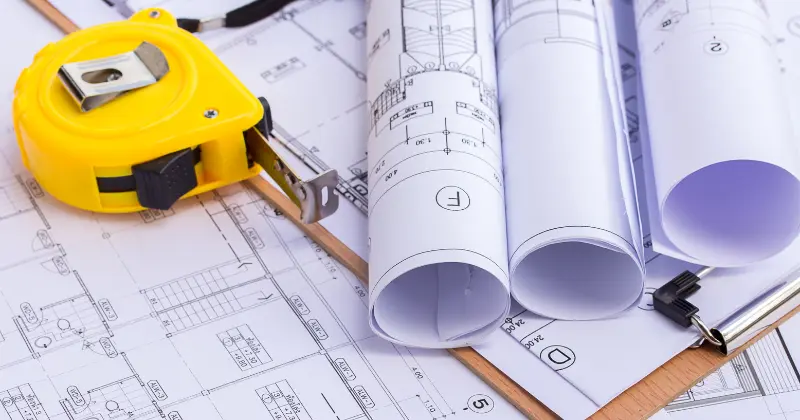
Did you know that an estimated 52% of rework in construction projects is the consequence of poor project data and miscommunication? While this statistic paints a bad picture for the building industry, it is hardly surprising. The construction sector is undergoing a digital transformation that has divided all project documentation into digital and paper formats. This makes it incredibly difficult not only to find information at the agile pace that the sector requires but also to keep everything up to date and organized, leading to miscommunication between teams and a lot of reworks.
Even companies that have left paper behind and gone fully digital might still rely on decentralized systems and different software, which also causes an environment of disorganization regarding project information. So, how do we solve this? The answer is efficient construction document control.
An efficient construction document management system can help you centralize all project documentation, including drawings, specifications, contractor agreements, BoQ, and much more, in a digital environment accessible to everyone. However, to implement such a system successfully, you must first understand the process’s ins and outs. This RIB guide will tell you everything you need to know!
What is Construction Document Management?
Construction document management is a set of processes and tools for successfully creating, distributing, and managing project documentation. It ensures documents are always available and updated to facilitate collaboration and communication between project stakeholders.
With so many moving parts and people working simultaneously, ensuring the proper documentation is available in a unique location and updated with the latest information can present a significant competitive advantage due to increased construction productivity. With an organized document system, teams can eliminate guesswork and complete their tasks with the confidence that they possess all the necessary information to complete each task correctly. This confidence is transferred to all the following tasks, ensuring a successful workflow based on collaboration and communication.
Types of Construction Documents
The issue with construction documentation is born due to the extensive list of documents required to complete a project. Each project phase has its own set of documents that must be constantly updated if any changes are made, making it a challenging task. Some standard documents include:
- Drawings
- Construction specifications
- Schedules
- Cost estimates
- Bill of quantities
- Demolition plans
- Bidding documents
- Contracts
- Change orders
- Safety plans
- Request for information
- Permits
- Reports
- Invoices
Consequences of Poor Document Management
As mentioned, poor document management can adversely affect a project’s end result. For starters, staff members need to spend hours (that could be spent adding value to more critical tasks) looking for information on a sea of paper or outdated spreadsheets or PDFs. This leads to mental frustration that directly affects productivity and causes rework.
Reworks are also caused by confusion about multiple versions of the same document, which leaves teams uncoordinated and lost. This directly affects the project’s budget and schedule as more human and material resources must be allocated to fix issues and mistakes.
A poor construction document management process can also lead to expensive legal issues and affect your company’s reputation, as your clients might not want to work with you anymore. These kinds of legal problems are not uncommon in a construction setting but can be prevented with clear communication and the organization of relevant documentation.
Construction Document Management Benefits
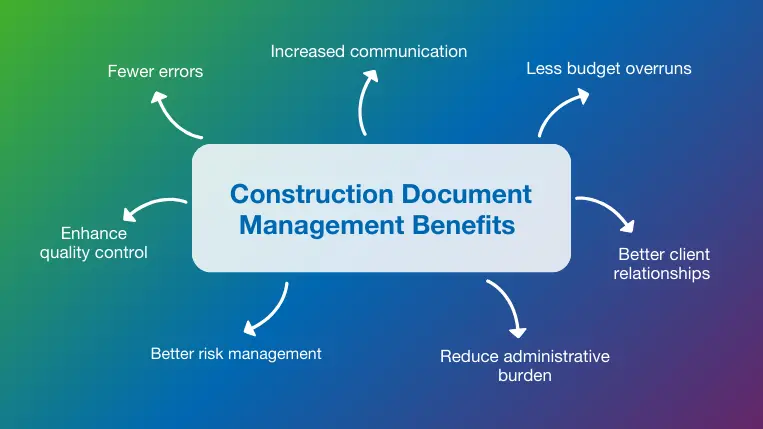
Up to this point, we’ve made it clear that neglecting document management can have negative effects on a project and a company level. Now, let’s discuss some benefits your company can reap from investing in construction file management.
- Fewer errors: With the proper construction document management system in place, team members can be aware of any changes to the design or specifications and apply those changes to their work. This significantly reduces the risk of errors due to miscommunication or outdated information, making the project way more efficient.
- Increased communication: Efficient document management improves communication in construction projects by eliminating common errors like multiple versions of the same document. Every team member can’t be present at every meeting and aware of every little change, especially for on-site teams. Therefore, having access to up-to-date documentation in a centralized location can make a significant difference in how teams communicate and collaborate.
- Less budget overruns: As mentioned previously, poor document management has many financial implications. By ensuring every stakeholder has access to an organized system where all documents are updated and easily accessible, you’ll reduce the risk of reworks and prevent budget overruns. Plus, by organizing all files smartly, you’ll also ensure staff are dedicating their time to performing the work instead of looking for information, which can also translate into increased productivity and less money.
- Better client relationships: So far, we’ve touched on benefits related to improving productivity and financial performance. An additional benefit that moves from the operational area is enhancing client relationships and satisfaction. Clients often want to be involved in the project and want constant updates. Offering them a professional system where they can access all project information and documentation will strengthen your relationship and make your company look professional.
- Reduce administrative burden: A good plan for document control in construction reduces administrative burden as you don’t need to be the point of contact between the client and the different teams. It also saves time having dozens of meetings to clarify things that are not updated in the documentation, making it easier to manage all relationships within the project. Plus, it reduces the risk of litigation, which is also costly and tedious.
- Better risk management: Construction projects are not free of safety and financial risks. Having organized and up-to-date documentation helps boost risk management in construction projects by providing centralized access to all project information, making it easier to develop strategies and mitigate risks.
- Enhanced quality control: Incomplete or outdated documents often lead to quality control issues, as crucial information is lost or misinterpreted. A good construction documentation management system eliminates this issue by ensuring each team member can access the right data at the right time. This makes processes like quality control and quality assurance in construction projects much easier and more successful.
Best Practices for Construction Document Management
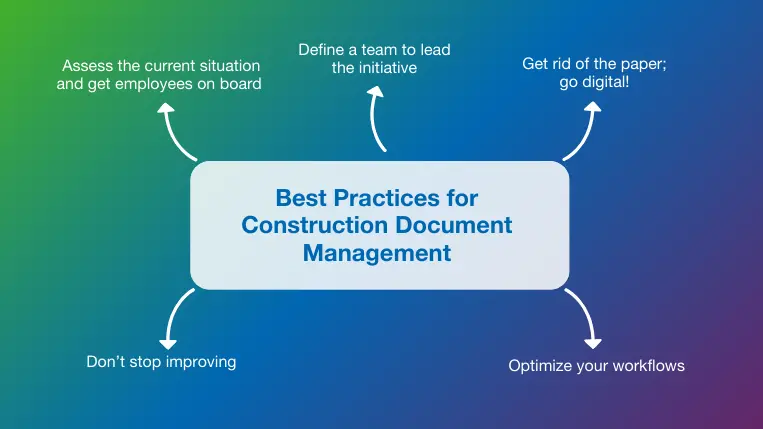
Implementing change at an organizational level is a challenging task. However, sometimes, change is necessary to bring the organization forward and stand out from the competition. A sound document management system can positively reward companies that implement it correctly. But what does a successful system even look like? And what steps can be taken to ensure we get the expected results? These tips and best practices will help you get the job done!
Assess the current situation and get employees on board
The first step in any construction change management plan is to assess the current situation. See what problems your current document management system has and what needs to be changed. To do so, you first need to understand what a good document management system looks like. In our experience, a good system should:
- Organize documents in a way that is easy to find and navigate
- Be easily accessible from multiple devices
- Can share documents with agility
- Have security features to prevent use by unauthorized people
- Be scalable and easy to integrate with different systems
If your current system does not meet these criteria, then you know it is time for a change. That said, it is important to note that each organization is different and might have different requirements. Therefore, it is important to assess the situation from the point of view of your company and its specific needs.
Once that is out of the way, you can start talking to your workforce about the change. This is paramount to successful implementation, as you need their support for the new system to work. Don’t be surprised if some employees, especially older ones, are against the change. It is common for construction workers to want to stick to their old ways. However, if you take the time to explain the benefits and hear their suggestions and expertise, you’ll be in a much better position to ensure success.
Define a team to lead the initiative
As we just mentioned, involving the entire organization in this change is a fundamental practice to achieve a complete cultural shift. However, for the process to succeed, you’ll still need to define clear roles and responsibilities to ensure the new system is developed and implemented with care, organization, and accountability. A good practice in choosing the right people for the job is picking employees who were already on board with the new document management system before they were given the leadership role to ensure they honestly believed in the project. Assigning a team or a person to be in charge can help identify issues and employees who might need more training to implement the new processes.
Get rid of the paper; go digital!
This might sound like an obvious point for some people. However shocking as it might sound, some construction companies still heavily rely on paper documentation. Paper can be considered the enemy of an efficient construction document management system as it is almost impossible to update and organize documents in a paper format. The same goes for emails and Excel spreadsheets, which often need to be updated or have the issue of multiple versions being sent from email to email.
If you want to transform successfully, invest in digital construction technologies like cloud project document management software. These solutions offer a centralized location to access all documents from anywhere and allow for easy updates of any changes, providing a unique source of truth for all project information.
Optimize your workflows
Apart from investing in software, setting clear workflows to ensure the organization’s construction document management processes are standardized is also essential. For this purpose, you should define a straightforward method for generating documents, uploading them to the system, sharing them with others, and approving changes, among other things. Using templates to generate standard documents is a good practice to ensure no discrepancies are found between teams and that everyone is using the same formats and languages.
If you are using different systems for different documents, you will likely encounter issues when trying to standardize and optimize workflows. This highlights the importance of investing in centralized cloud-based construction software to prevent issues when consolidating documentation.
Don’t stop improving
It is very unlikely that the new system will succeed the first time. You’ll obviously see improvements from the previous approach, but you’ll still need to learn and adapt your new system to get it where you expect it to be. As mentioned, each company has its unique needs and requirements. Therefore, gathering employee feedback and changing things that are not working correctly will help you tailor the processes to your company’s specific needs. Using construction reports to track the impact of the changes is a great way to identify improvement opportunities and ensure success.
What can Construction Document Control Software do for You?
Investing in the right technology is essential for your document management journey to be successful. Our document management software, RIB Project, is a powerful cloud-based solution that allows you to access and share all project documentation for seamless integration and collaboration. Let’s see what this powerful platform can do for you.
- Centralized location for all documentation: Our Work Space feature allows you to manage all documents, drawings, models, and reports in one place, making it easier to access key information whenever you need it without spending hours looking for it. This helps save time and minimize the risks of errors due to missing data or documentation.
- Audit trail: Accountability and transparency are fundamental elements of successful document management. Our complete audit trail functionality gives you a full breakdown of who accessed, viewed, changed, or edited a document and at what time, helping to avoid disputes later.
- File comparison: Users of RIB Project can compare different file versions to see the changes made over time. Additionally, instant notifications ensure issues or critical changes are communicated to the relevant stakeholders automatically.
- Publication space: The publication space is where teams can share and upload the approved documents to ensure they get higher visibility. It also helps to avoid misunderstandings with older versions, lowering the risks of issues due to outdated data.
- Mobile access: Due to the platform’s cloud nature, documents can be accessed from mobile devices or any other device with an internet connection. This level of accessibility ensures that site workers can access specifications or other relevant files from the site without issues.
Final Thoughts
Documents play a crucial role in the correct development of a construction project. They serve to communicate critical information and ensure all stakeholders work towards the same goals and expectations. Managing files, reports, drawings, permits, contracts, and more takes work, especially when you still rely on paper or infinite email threats.
Investing in professional construction documentation software, like RIB Project, is the best way to achieve an organized and collaborative document management system. Our platform offers a range of functionalities to manage all your files in a smart, automated way, ensuring up-to-date information is always available to the right people. If you want to experience the power of digital document management, get a demo for RIB Project today!
Most Recent
10 mins read
10 mins read
11 mins read
10 mins read
Blog Categories

Ebook





